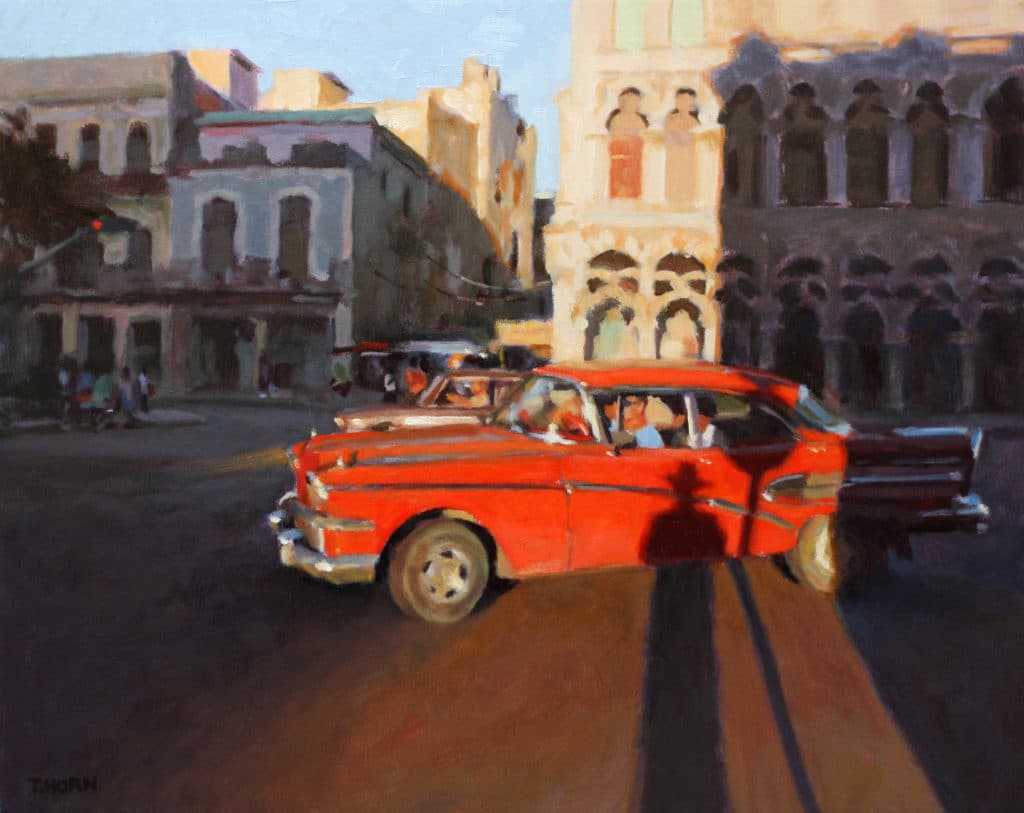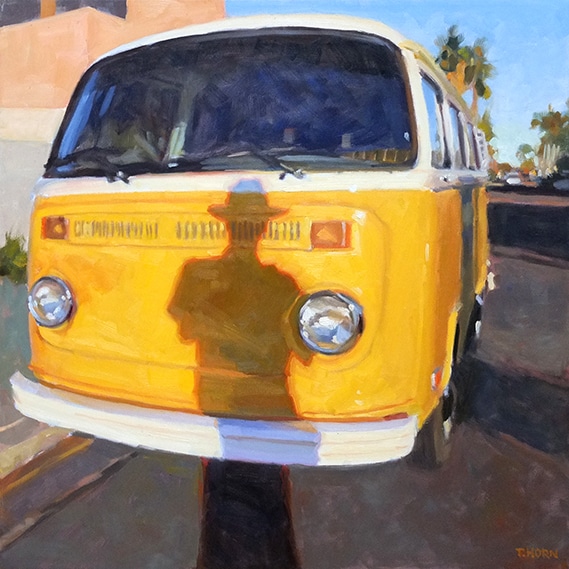Timothy Horn explains how he stumbled upon a subject that keeps his landscape painting journey interesting and challenging.
See his new works in the exhibition “Deep Blue” at Gleason Fine Art (Boothbay Harbor, Maine), September 5 through October 1, 2019. Opening reception: September 8.
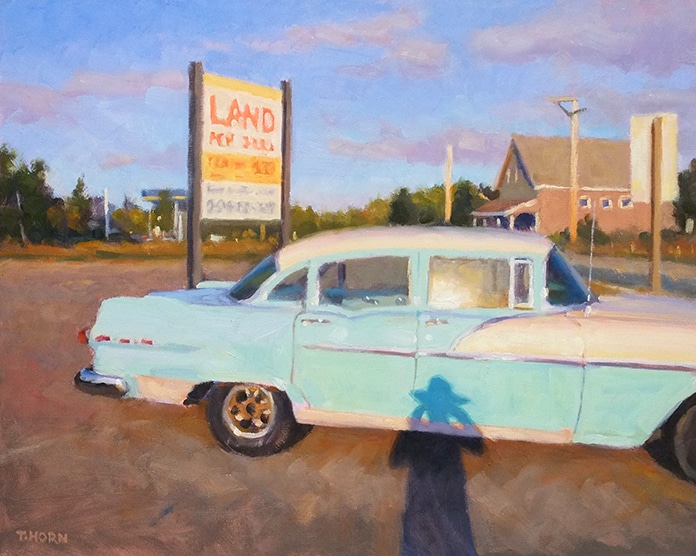
On Landscape Painting and “Shadow Selfies”
By Timothy Horn
(timhornart.com)
As with many series, this one began without planning. It was a subject I tripped over more than once before deciding to try and capture it on canvas. These are the kind of new directions that keep painting interesting and challenging — exploring new avenues, not knowing where they will lead.
The Photo Reference
I take lots of photos of old cars as reference for paintings. As I’m walking around a car snapping away, I often inadvertently cast a shadow on the car, which is always a bit startling and usually causes me to step back to avoid getting the shadow in my photo. But occasionally I take photos that include the shadow. And sometimes later while reviewing the photos, I find the shadows kind of interesting and like that they show my old hat that I’ve had for years. Often they include the detail of a jacket or shirt in the silhouette, revealing a bit of character in the figure. I call these paintings “shadow selfies.”
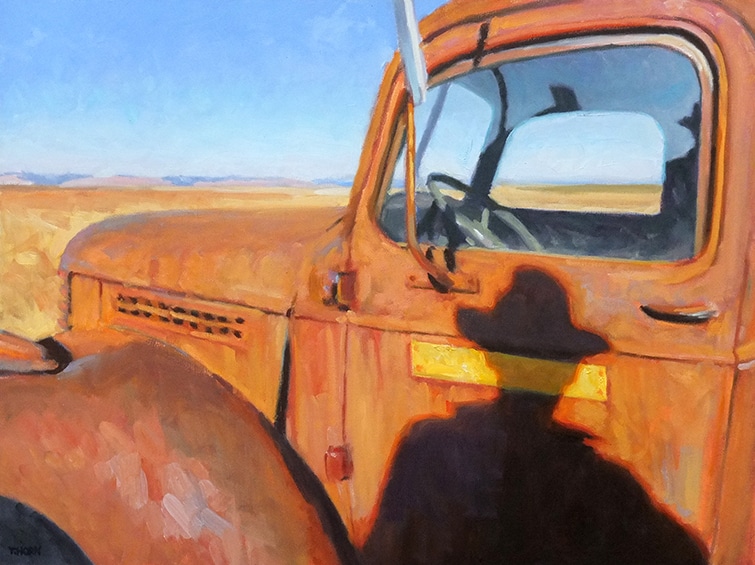
Breaking the Rules of Landscape Painting
Now, one of the many general rules in painting that I’ve heard is to avoid having the sun directly behind you, because it can make the shadows small and few in number. Sometimes it can look like an image taken with a strong camera flash. But whenever I take these shadow photos, the sun is absolutely directly behind me. This may have been why I was reluctant to paint these shadow scenes for so long.
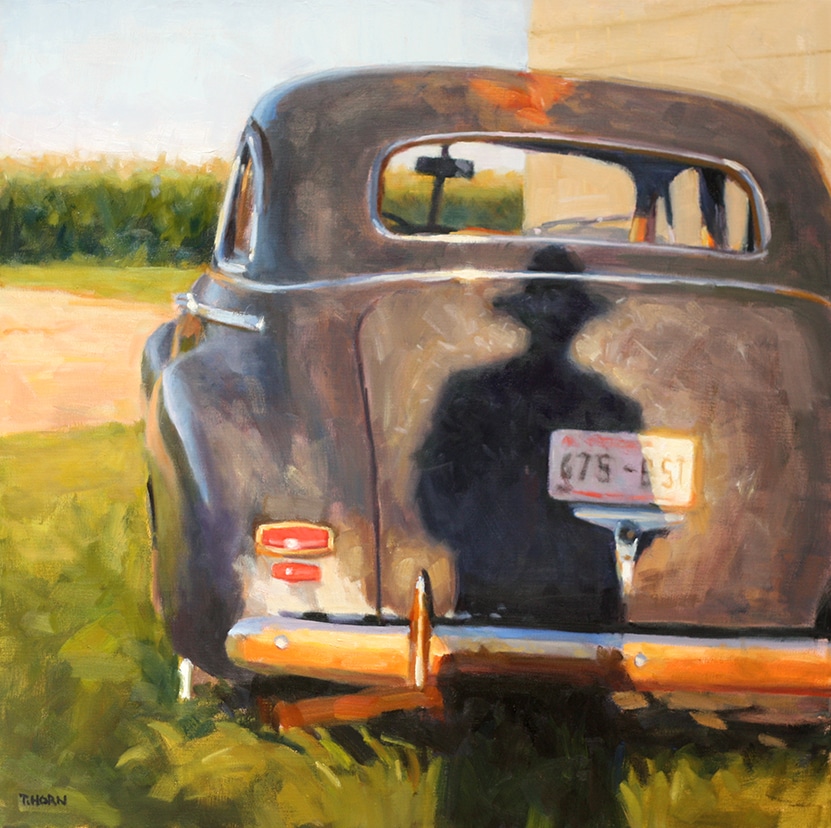
The first one I painted was my image cast on an old black Buick that I came across during the Door County Plein Air Festival several years ago. I had done a painting of the car on site during the event, which turned out to be my favorite of the week. Before I left the scene, I again walked around the car taking photos. The sun had gotten lower in the sky, and as I observed the car from various angles, my shadow popped up on the car’s trunk.
In this first painting, because of the sun’s position, the light is very intense in the areas immediately surrounding my shadow. The sun hit the license plate and, with its special reflective material, seemed to glow, along with highlights sparkling on the chrome trim. Capturing the specific qualities of light were probably the most challenging part of creating these paintings.
These paintings can have an unexpected psychological effect on the viewer, by adding a human element and making them feel more a part of the scene. In a way it adds another dimension by including the viewer in the painting. A few times I’ve watched as someone looking at one of the larger paintings in a gallery will actually sway back and forth a bit, to make sure the cast shadow is not their own. This demonstrates that someone looking at the painting is standing approximately where I was when I took the reference photo.
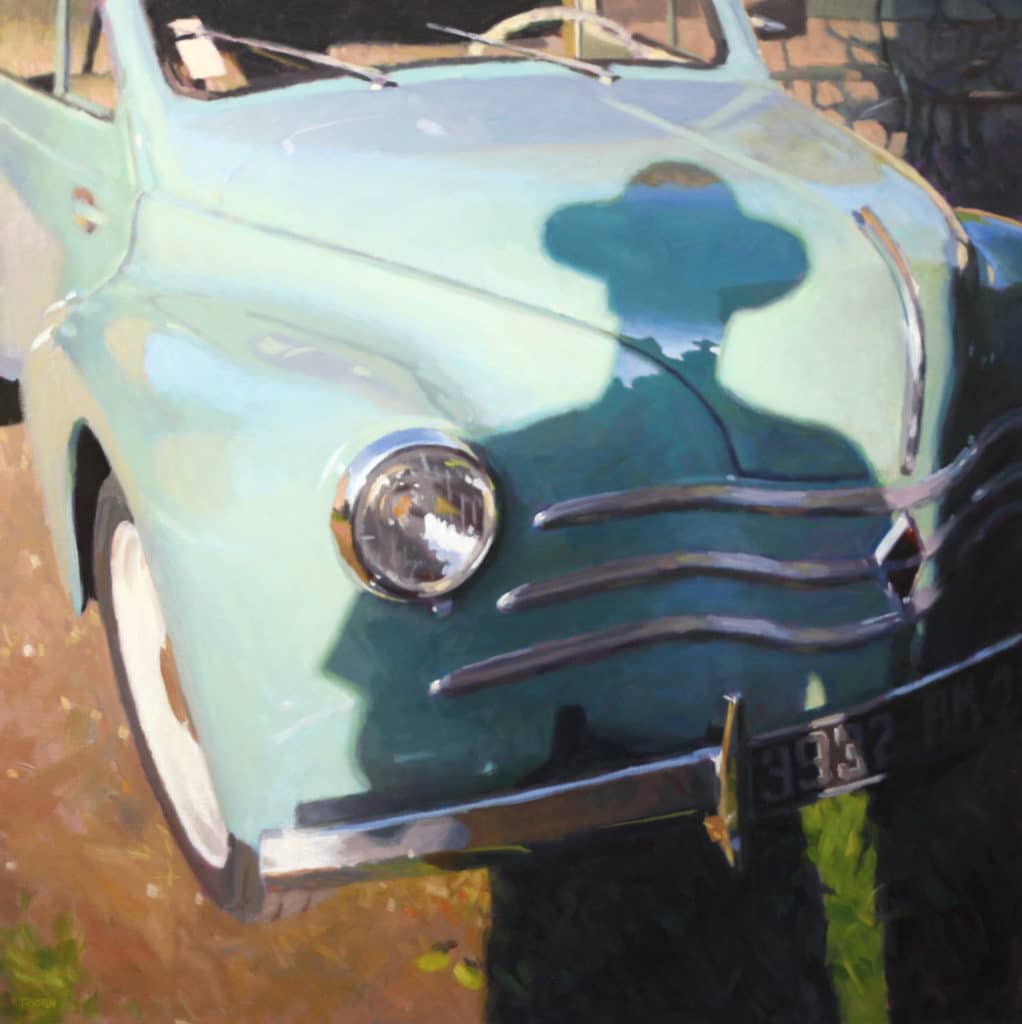
Shortly after I began painting “Insight” — the largest in the series so far — I looked more closely at the reference photo and realized there was a reflection of me contained within my cast shadow. It took me a few minutes to understand how this could be, but once I understood it, I knew I had to try and capture that effect in the painting.
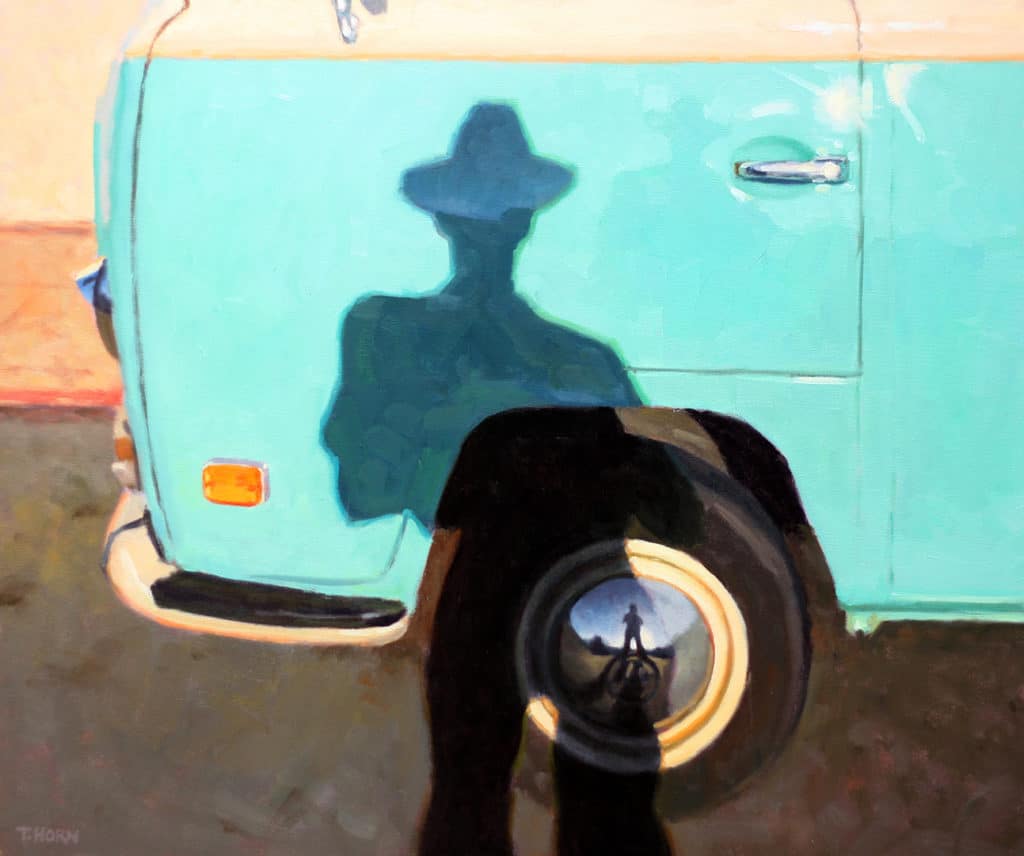
And in the painting “Shadow Shift,” of an old Volkswagen bus, there’s the cast shadow, a small reflection of me in the chrome hubcap, and another softer reflection of me in the door. These hidden or secondary images add an element of discovery that enriches the viewer’s experience.
For the most part, working on one of these is a fairly straightforward task, relying on the reference photos for much of the information. It does not allow for moving things around much, or pulling one area, pushing another, or editing out certain elements — part of the process that I really enjoy when creating a typical landscape painting.
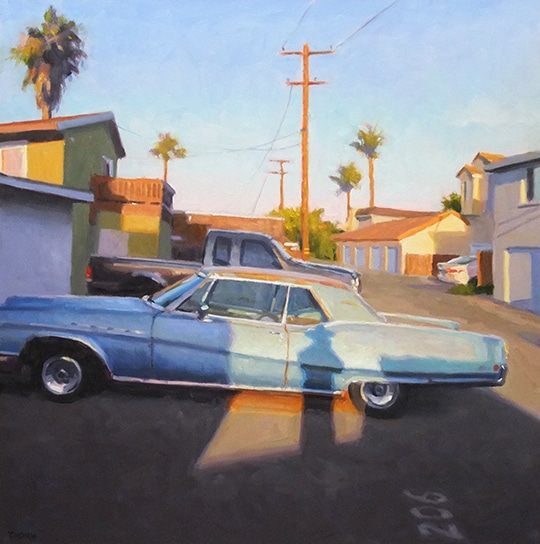
So when working on the shadow selfies, I miss the opportunity to manipulate things and just the general struggle of trying to make it all work. I have found, however, that the edges of the cast shadows provide an opportunity for color experimentation.
Compared to the edges of the car or truck that I’m painting, the edges of the cast shadow are softer. It’s an area of transition from light to shadow that sometimes reveals a color and value different from both the light and the shadow areas. Pushing the color on these edges has allowed me to bring something more to the painting — an unexpected zing, a richness in color and some added character to the mysterious figure in shadow.
